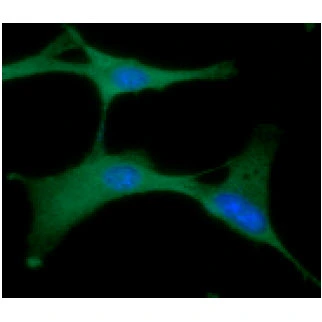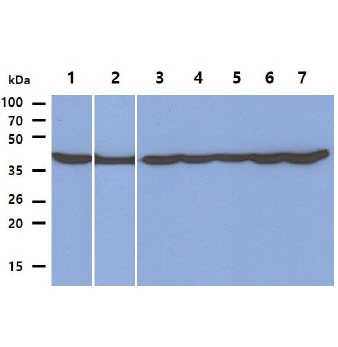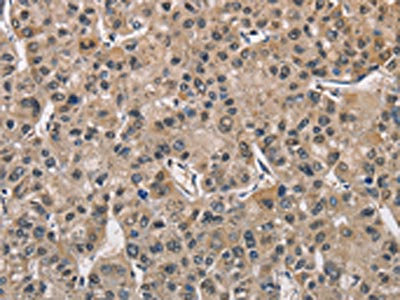
ICC/IF analysis of U87-MG cells using GTX57637 PGK1 antibody. Blue: DAPI Green: Primary antibody Dilution: 1:100
PGK1 antibody [AT2F4]
GTX57637
ApplicationsImmunoFluorescence, Western Blot, ImmunoCytoChemistry
Product group Antibodies
TargetPGK1
Overview
- SupplierGeneTex
- Product NamePGK1 antibody [AT2F4]
- Delivery Days Customer9
- ApplicationsImmunoFluorescence, Western Blot, ImmunoCytoChemistry
- CertificationResearch Use Only
- ClonalityMonoclonal
- Clone IDAT2F4
- Concentration1 mg/ml
- ConjugateUnconjugated
- Gene ID5230
- Target namePGK1
- Target descriptionphosphoglycerate kinase 1
- Target synonymsHEL-S-68p, MIG10, PGKA, phosphoglycerate kinase 1, PRP 2, cell migration-inducing gene 10 protein, epididymis secretory sperm binding protein Li 68p, primer recognition protein 2
- HostMouse
- IsotypeIgG1
- Protein IDP00558
- Protein NamePhosphoglycerate kinase 1
- Scientific DescriptionThe protein encoded by this gene is a glycolytic enzyme that catalyzes the conversion of 1,3-diphosphoglycerate to 3-phosphoglycerate. The encoded protein may also act as a cofactor for polymerase alpha. Additionally, this protein is secreted by tumor cells where it participates in angiogenesis by functioning to reduce disulfide bonds in the serine protease, plasmin, which consequently leads to the release of the tumor blood vessel inhibitor angiostatin. The encoded protein has been identified as a moonlighting protein based on its ability to perform mechanistically distinct functions. Deficiency of the enzyme is associated with a wide range of clinical phenotypes hemolytic anemia and neurological impairment. Pseudogenes of this gene have been defined on chromosomes 19, 21 and the X chromosome. [provided by RefSeq, Jan 2014]
- Storage Instruction-20°C or -80°C,2°C to 8°C
- UNSPSC12352203





